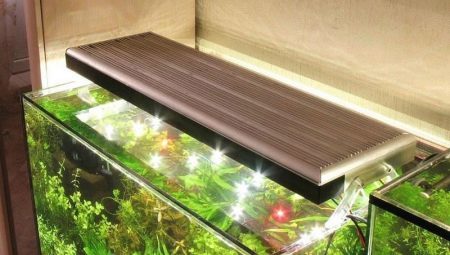Aquarium is an interesting element of the interior that will not leave anyone indifferent. In order for the conditions for its inhabitants to be comfortable, it is necessary to maintain a mass of parameters at a certain level. One of them is light. Due to its lack of plants die, which can cause damage to water and the subsequent death of the fish themselves. That is why it is often necessary to use artificial light sources. One of these is the LED lamp.
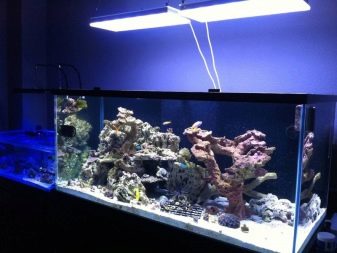

Description and purpose
Note that lamps play an important role for plants and fish in saturating water with oxygen and valuable substances. Typically, in artificial reservoirs, which include the aquarium, you can install these types of lamps:
- incandescent;
- luminescent;
- LED light.
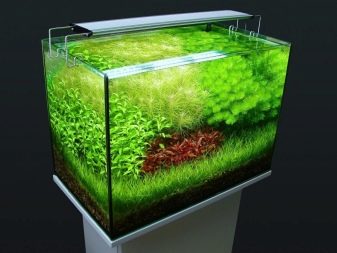
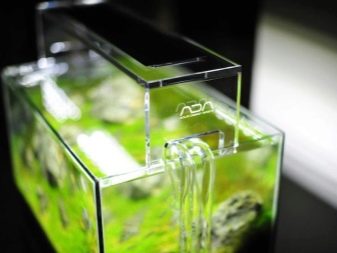
The latter category is the most popular. LED luminaires for an aquarium type LED allow you to organize uniform lighting and have several advantages compared to the other categories mentioned. The light emitted by them is as close to natural as possible. This allows you to make the stay of fish and plants in the aquarium tank comfortable.
A number of aquarists for beauty make such lamps multi-colored. But not everyone knows that colored LED-lamps negatively affect the mood of the inhabitants of the aquarium. And in plants, such light can cause a violation of the photosynthesis process, which may result in their death.
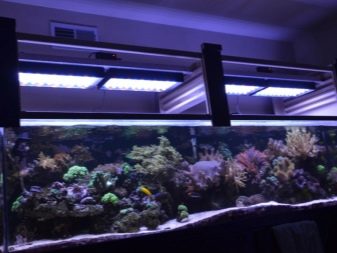
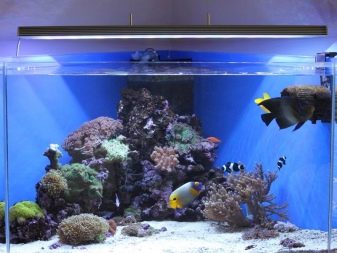
Advantages and disadvantages
Aquarium LED lights have a number of advantages and some disadvantages. If we talk about the pros, then the following should be mentioned.
- Profitability.Energy consumption when using LEDs is significantly lower than when using other groups of lighting devices.
- Durability. Their service life is from 3 to 5 years.
- Resistance to mechanical stress. There are no fragile spirals or glass bulbs in this type of lighting.
- The presence of moisture-proof coating. In combination with low power, the use of such a lamp will be as safe as possible.
- They do not heat up too much and do not change the temperature in the aquarium during operation, unlike other types of lamps.
- Security. They have no harmful substances such as mercury.
- A wide spectral range allows you to create high-quality backlight.
- The ability to adjust the brightness of the light with a constant light spectrum.
- Failure of one LED does not affect the operation of neighboring ones.
- Fire safety. When using such lamps, the probability of a short circuit is close to zero.
- Great performance. Lamps can work up to 12 hours and do not overheat.
- Simple installation. They are very easy to install and connect to the mains.

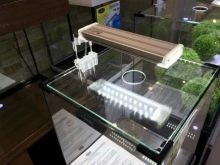
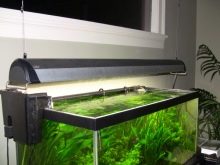
Despite the presence of a fairly large number of advantages, these lamps have some disadvantages:
- they are not too common, which makes their price higher than that of analogues;
- so that they last longer, you should purchase and install a special power supply;
- LEDs should be well cooled so that the probability of overheating is minimized, so they can be equipped with a radiator, which adds weight to the entire structure;
- the location under the aquarium lid reduces their working life due to the fact that heat removal in this case will be difficult.
Based on the above advantages and disadvantages, the use of LED lamps for lighting an aquarium is a justifiable measure.

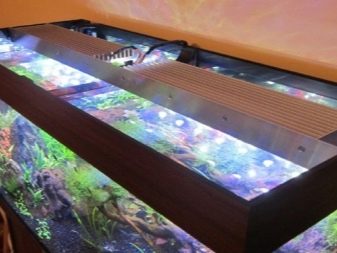
Varieties
There are several varieties of LED lights. This or that type should be selected depending on the availability of additional functions, as well as the size of the aquarium tank.
- LED lights with flexible housing. They can be used for containers up to 30 liters. They have a power of 1 W, and the luminous flux is at a level of about 100 lm. These models are very convenient for round-shaped aquariums. Such models are usually powered by a USB connector. LED lights are compact, easy to install, but only suitable for lighting small objects.
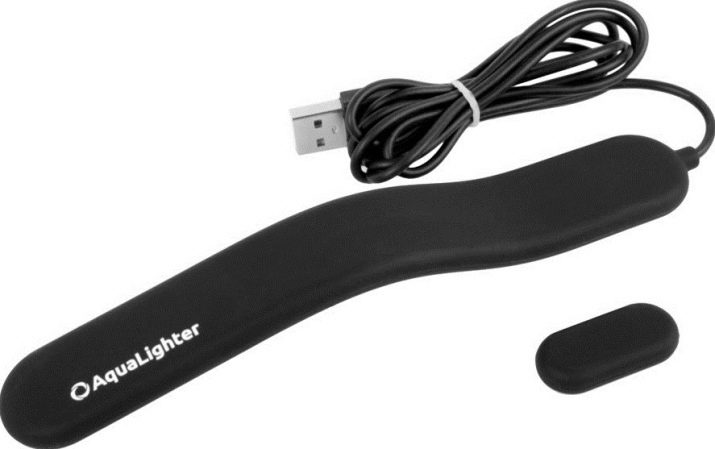
- Lamps with a power of 1.7 watts. They are usually used for lighting pico-aquariums. It uses T5 LED modules. The luminous flux in this category is 150 lm. The color temperature indicator ranges from 5-7 thousand K. A lamp of this category works either from a USB connector or from a 100-240V power adapter.
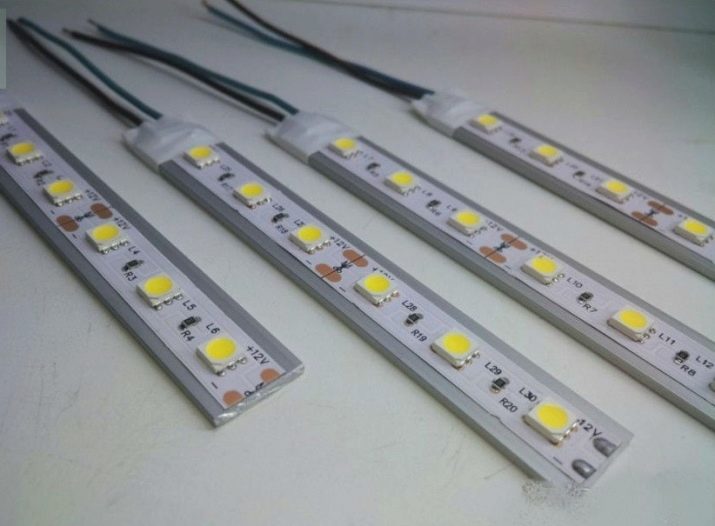
- There are models that are mounted on the cover. They are equipped with special adjustable mounts. The power of such lamps is 9 watts. T8 modules are used here. The luminous flux will be 930 lm.

- Two-channel lighting devices are used for aquariums, which are distinguished by a large spectral range and high aperture values. This group of fixtures has a remote dimmer control. Their feature will be that these models can change color temperature.

- Three-channel luminaires are equipped with a backlight script programming function. This allows you to control the brightness, light temperature, spectrum, as well as the time interval for changing these indicators. There is also a three-dimensional effect. You can control using an external controller. Channel 1 - cold white light diodes, channel 2 - warm white and red light, channel 3 - cold white light diodes.

- Another category - the same three-channel lampsbut for marine reservoirs. Their difference is in the characteristics of the three channels. Channel 1 - diodes of the blue lighting spectrum.Channel 2 - diodes of cold white light. Channel 3 - blue spectrum diodes. The power of this type of fixtures is slightly less than 40 watts.
All of the above categories relate to LED lamps or LED strips. But there are special LED spotlights. Their difference is that they are more powerful.
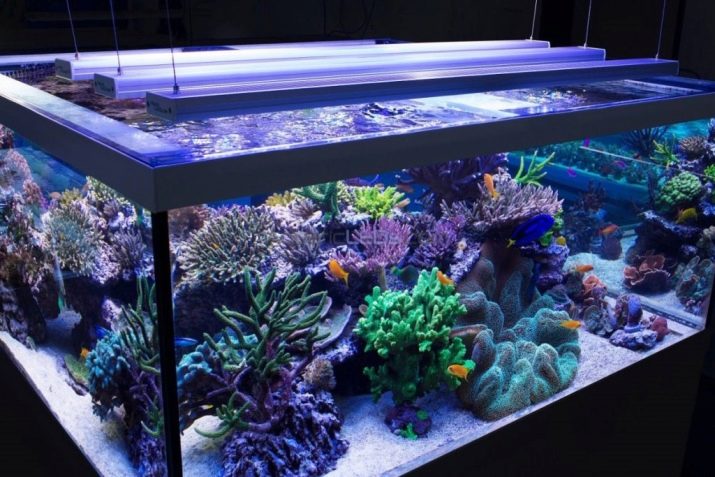
There is a separate category of lamps - submersible. Such models can be placed on the bottom of the aquarium or attached to its wall. But not every LED lamp that is sold in a pet store belongs to this category. It is very simple to determine whether the lamp is submersible or not - just find the mark on its body that it is made according to the IP68 standard. This characteristic indicates that the model is waterproof.
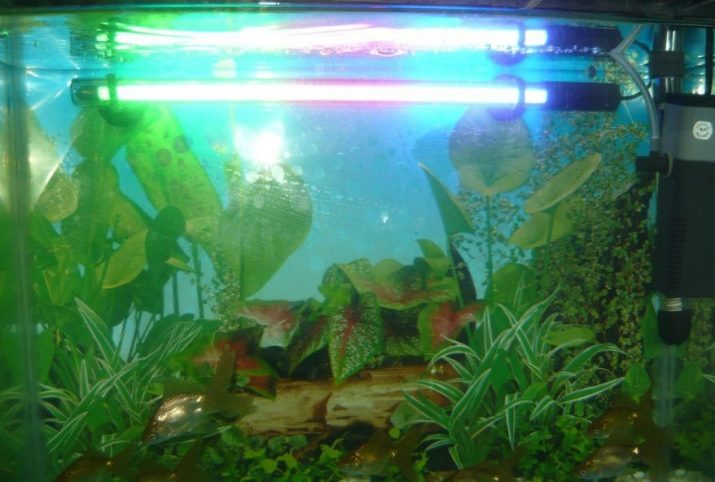
Many aquarists call all lamps phytolamps. But not every LED lamp can be called that. So it can be considered only if it will emit phyto light. And this is only possible if there is a red color spectrum. The phytolamp has another feature - its power is from 1 W per bulb. Then the light is able to penetrate through the 50-centimeter layer of water and can affect plants.
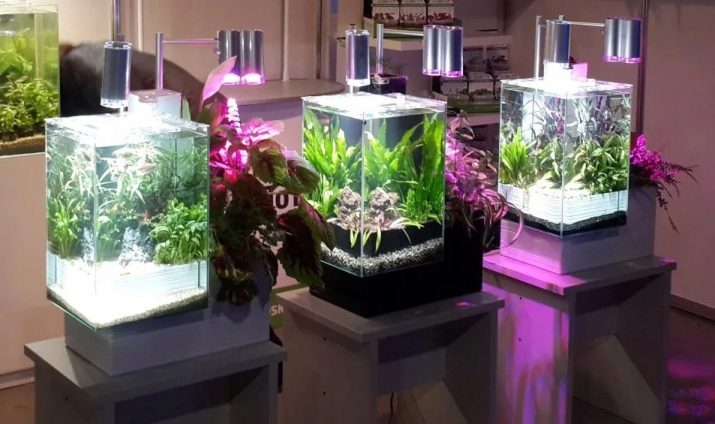
How to choose?
Now we find out how to choose LED-lamps depending on the size of the tank over which they need to be placed. They are usually selected by 2 indicators:
- light flux intensity;
- color temperature.
For other categories of fixtures, power will be the determining factor. If we take this indicator for one lamp as a basis, then we can calculate the total power of the entire lighting mechanism necessary for a tank of a certain size. This is due to the presence of requirements for the intensity of lighting per liter of liquid.

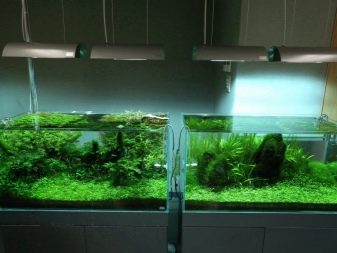
But for LED backlighting, an indicator of the luminous flux, which is measured in lumens, will be important. For plants, the normal average value is 20-40 lm. This is enough to ensure their normal growth. If the flora in the tank is more demanding, it is better to purchase lamps with a light flux of 40-60 lm.
The considered type of backlight is also characterized by certain indicators of color temperature. The minimum value for the aquarium is 5500 K. The ideal is 6000-8000 K. At a color temperature of 4000 K, the light will have a reddish hue, and above 6000 K it will be blue.
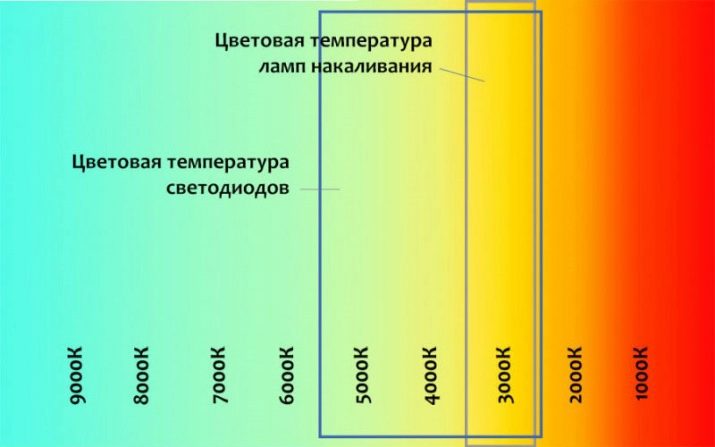
Another important point will be the quality of light diodes. Cheap crystals made in China show excellent luminosity at the beginning of use. But after some time, their accelerated degradation begins, which leads to a faster failure. Therefore, it is better to give preference to the products of well-known and trusted companies.
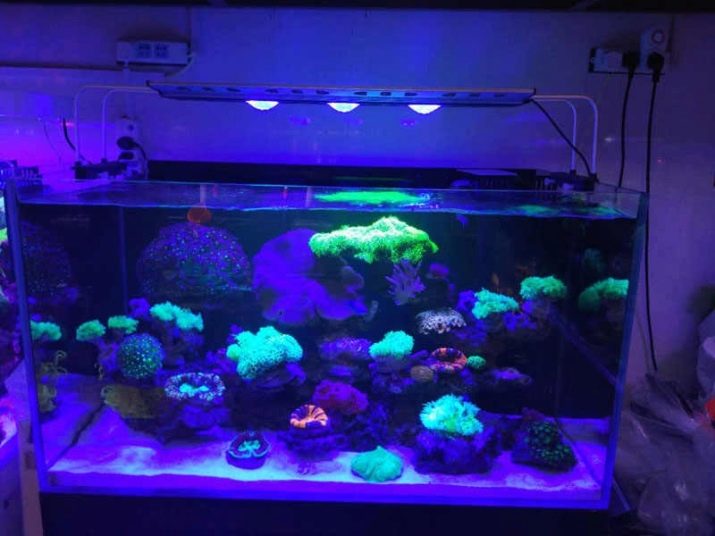
Power calculation
In order to calculate the required backlight power, you first need to understand what kind of LED lamps are needed. An indicator of 1 W is considered a kind of standard. But here it is important to pay attention to the volume of the tank, which may be different.
In stores, most often you can find LEDs whose power is 0.2 watts. If we assume that there is an aquarium with a volume of 200 liters, then you need an LED strip, consisting of 30 bulbs, or from 25 to 40 point LED-lamps.
The standard value of light per 1 liter of water is 0.5 watts. Independent calculations can be performed according to the formula: E = F: S, where F is the light flux index, and S is the surface area onto which the light flux falls.
The calculation is necessary because the standard value of 0.5 W may not always be accurate due to the different height of the walls of the aquarium in different models.
Therefore, in one case, this is enough to illuminate the water column, and in the other - not.
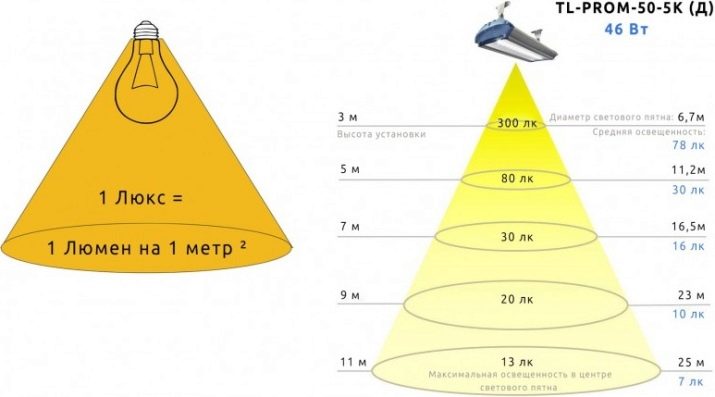
Lighting organization
It is better to install the lamp either along the wall of the container or on one of the sides of the lid. This arrangement will illuminate the maximum space in the aquarium.And if you need to replace some element - it will be easy to implement. In stores you can find sealed LED lights that can be left in the water.
A number of aquarists prefer to put homemade designs from ordinary LED strips. But they can be used only in the absence of contact with water.
In general, self-assembly of such tapes is easier to accomplish than connecting a tube lighting mechanism. To do this, you only need a tape, a 12 V power supply, and also a sealant, which will act as an insulator of wire connections.
When using this lighting method, LED crystals can quickly break due to water vapor. Therefore, it is better to choose moisture-proofing solutions.
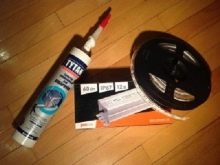

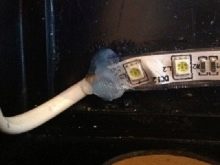
It will also be good to use color lights, but with a large restriction on the color range. For example, imitating moonlight can be used. It will be very useful for night fish living in aquariums. It will also allow you to watch pets in the dark.
Can say that living conditions of plants and animals in an aquarium are determined more by requirements and rulesthan the preferences of the owner of the aquarium. If you choose the right LED lights, you can create a really nice atmosphere in the water tank. This will have a beneficial effect on the life of plants that will sufficiently enrich the water with oxygen.
And thanks to this, the fish and other marine life will be really good and comfortable here.
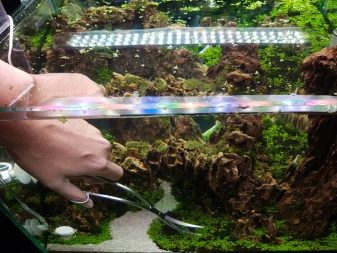
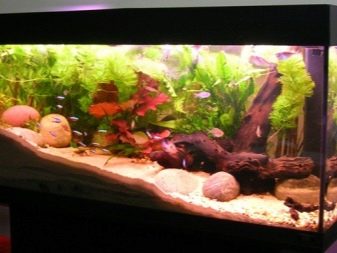
The secrets of making a simple LED aquarium lamp in the video below.
